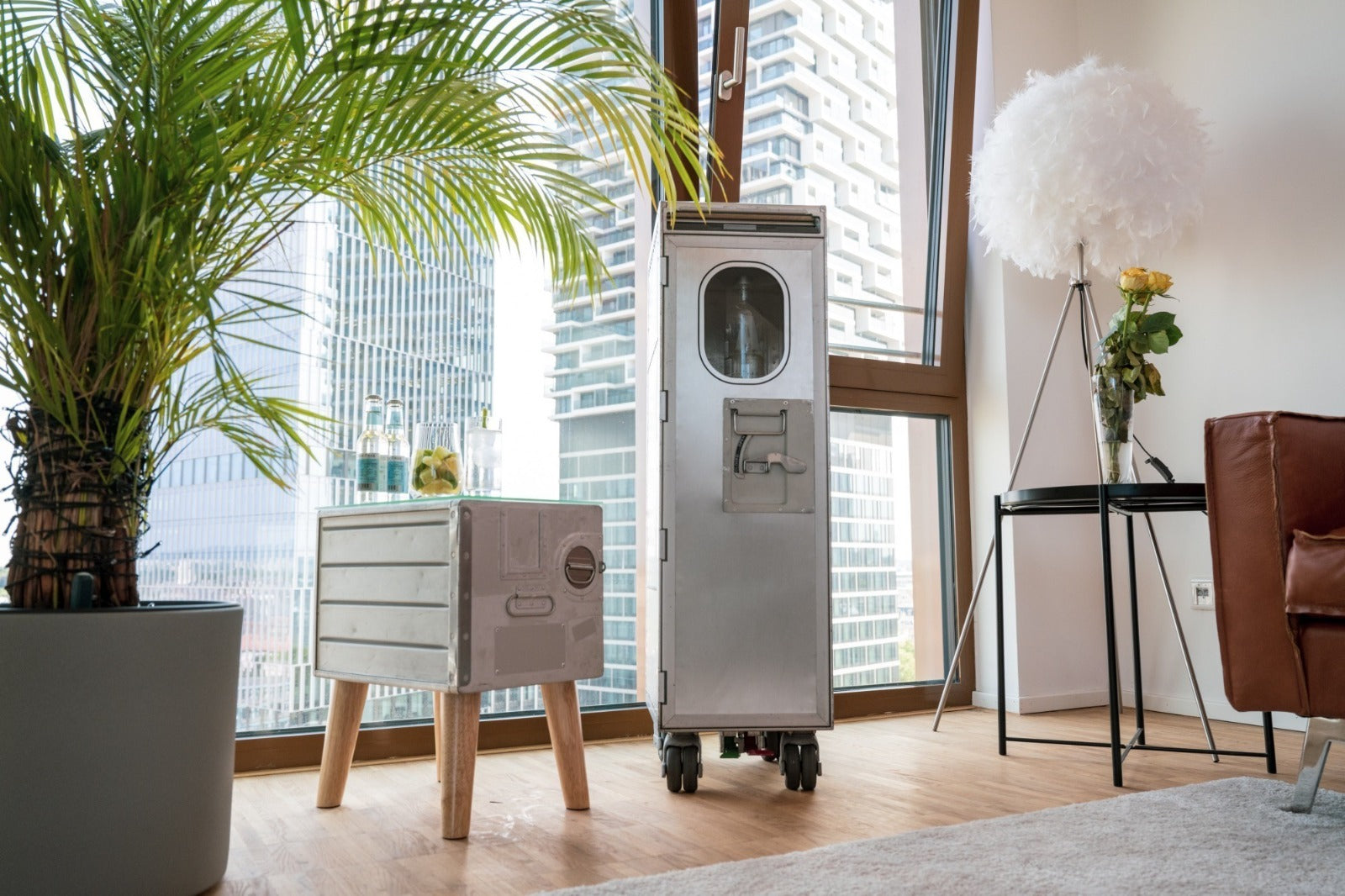Between aircraft technology and furniture culture
Many new pieces of furniture purchased today are made of lightweight materials, are inexpensively produced, and designed for a limited lifespan. The term "fast furniture" describes precisely this development. Similar to fast fashion, it stands for short-term trends, high production runs, and a rather low appreciation of the product itself. In contrast, aircraft furniture is made from original aircraft parts – trolleys, cabin boxes, windows, or wall modules that originally came from the interiors of real aircraft. They are designed for extreme conditions, are durable, easy to maintain, and often last for decades. When such components are reused on the ground, they not only gain a new purpose – they also send a clear message.
What does Fast Furniture mean?
Fast furniture is a term for furniture that is produced inexpensively and replaced frequently. People buy whatever is currently in fashion. The products are often made of chipboard, plastic, or thin metal—materials that are easy to transport but not always designed for long-term use.
Typical features:
-
short lifespan
-
low resale value
-
Replacement for minor damage
-
Fast disposal during removals
The high turnover of such furniture leads to resources being consumed and waste being generated without the individual piece of furniture being used in its entirety over the long term.
Aircraft furniture: technology with history
Furniture made from former aircraft differs fundamentally from typical mass-produced furniture. Whether a Airplane trolley, one Airplane cabin box or a window frame Each element was once manufactured to high technical standards to withstand flight operations. The materials are designed for stability, function, and durability. Even when the pieces are no longer needed in the cockpit, cabin, or cargo hold, they remain usable. Through cleaning, surface treatment, and minor adjustments, they can fulfill new functions in living and working areas. Traces of their original use often remain visible – a scratch on the handle, a flight number on the back, or the typical airline design. This makes this furniture not only functional but also traceable in its origins.
What aircraft furniture can say
Anyone who chooses a piece of furniture made from a real aircraft is making a statement. Not through a logo, but through the use of materials, technology, and memory. It's not just a question of style—it's also a question of attitude toward the way one designs spaces and uses products.
Aircraft furniture stands for:
-
Reuse instead of throwing away
-
Technology that functions beyond its original purpose
-
Facility with traceable origins
-
Furniture related to real events and use
Not a mass product – but a well-thought-out conversion
Aircraft furniture cannot be mass-produced. Each component comes from a specific aircraft, was individually assembled, and varies slightly in condition and design. This largely precludes identical reproduction. Instead, the focus is on customization: What function can the part fulfill in the future? What can be designed with it?
Examples:
-
An airplane trolley becomes a minibar in the living room or for storage in the studio
-
An airplane on-board box becomes a drawer on the shelf or a storage box in the office
-
An airplane window becomes a wall object, light fixture or mirror frame
-
An engine ring finds new effect as a sculptural spatial structure
Aviation technology in the living area
Many elements from the Airline Interior are made of aluminum, stainless steel, or composite materials – not only for design reasons, but also for safety reasons. These materials retain their properties even in the second phase of their life. This makes them suitable for residential and commercial applications, where they not only stand out visually but can also be used functionally. The clear design language and industrial surface can be integrated into modern interior concepts. At the same time, each component represents a real story: flights, routes, maintenance, use by crews and passengers. All of this remains part of the object.
Conclusion: attitude instead of quick purchase
Interior design decisions can be more than just a matter of style. Those who integrate aircraft furniture into their spaces are consciously opting against quickly disposable products. Instead, they create sustainable solutions—not only in the literal sense, but also in terms of resource management and their own home decor.



